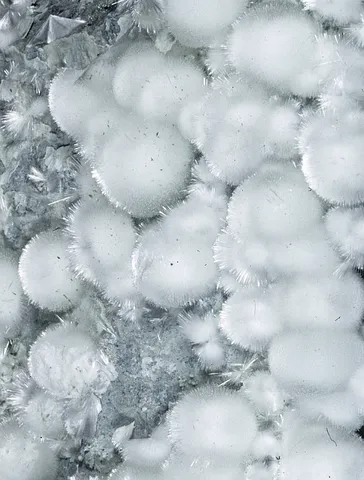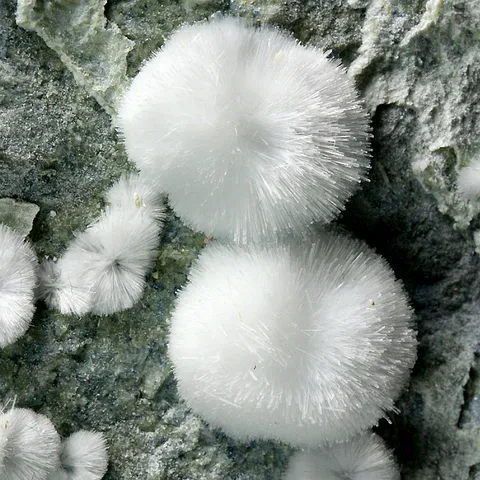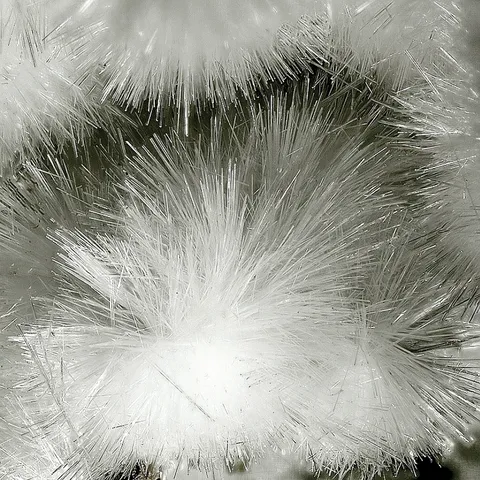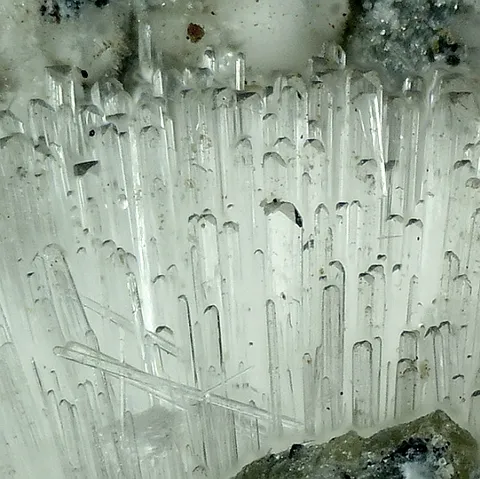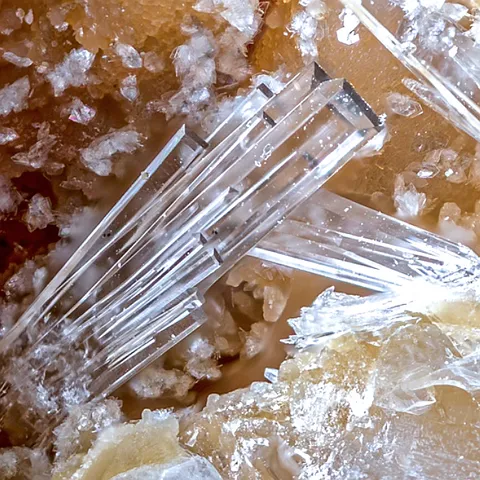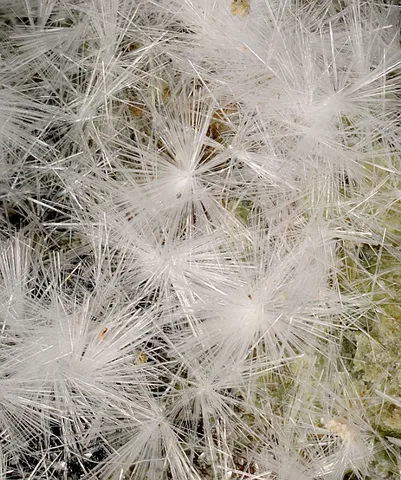 Artinite - Encyclopédie
Artinite - Encyclopédie
ARTINITE
Class : Carbonates, Nitrates, Borates
Subclass : Hydrated carbonates
Crystal System : Monoclinic
Chemistry : Mg2CO3(OH)2 3H2O
Rarity : Rare
Artinite is a hydrothermal alteration mineral lining the surface or occupying the fissures of serpentinized ultrabasic rocks. Its name was given to it in honor of Ettore Artini, professor of mineralogy at the University of Milan. It occurs in tufts and urchins of fine acicular transparent or white crystals, sometimes in botryoidal masses or crusts, usually associated with magnesite and brucite.
Main photo : Artinite from Artinite Pit, San Benito, California, USA © Rock Currier
Artinite in the World
Photo on the right : Artinite from Rio del Bastardo, Roccamurata, Parma, Italy © Dario Cericola
Twinning and special crystallizations
No twin known for this mineral species.
Fakes and treatments
No fake or treatment identified for this mineral species.
Hardness : 2.5
Density : 2.01
Fracture : Irregular
Trace : White
TP : Transparent
RI : 1.488 to 1.557
Birefringence : 0.068
Optical character : Biaxial -
Pleochroism : None
Fluorescence : None
Solubility : Acids
Magnetism : None
Radioactivity : None

